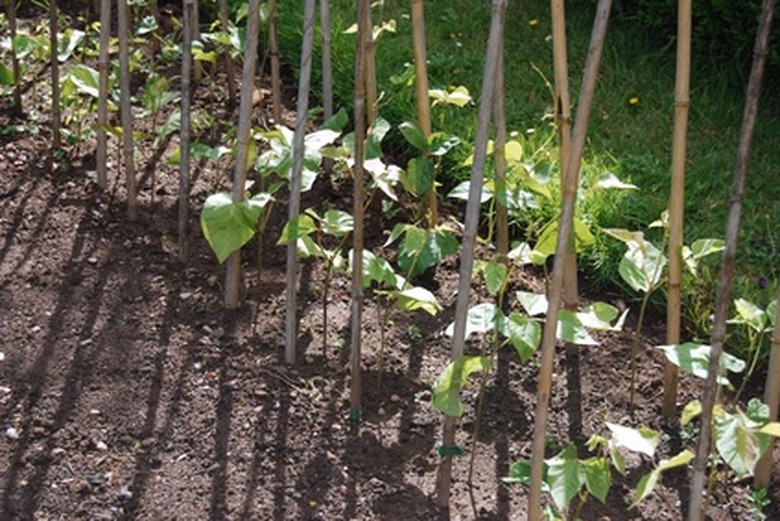Leaf Wilt On Green Bean Plants
Beans are versatile vegetables. There are dozens if not hundreds of varieties. They grow on bushes or as climbing vines. Beans are relatively easy to grow. In spite of this fact, green beans are susceptible to a number of diseases and insects that can cause a great deal of damage. Green beans can also react badly if not given the proper basic care. Wilting leaves can be a sign of any of these conditions and should not be ignored.
- Beans are versatile vegetables.
- Green beans can also react badly if not given the proper basic care.
Water
Lack of water is the most common reason for bean leaves to wilt. Water is an essential component in a plant's ability to make its own food. Without water, the green bean plant becomes stressed and weakened. One of the first signs is wilting of leaves. If the leaves do not perk up after a thorough watering it is time to look for another cause.
Soil Conditions
Beans require a good deal of nitrogen in the soil to produce healthy, lush leaves. Without nitrogen, the leaves will be droopy, small and low in numbers. The bean plant may look sickly. An application of standard fertilizer with a nutrient analysis value of 10-10-10 or 12-12-12 may be all that is needed to revive wilting leaves.
- Lack of water is the most common reason for bean leaves to wilt.
- An application of standard fertilizer with a nutrient analysis value of 10-10-10 or 12-12-12 may be all that is needed to revive wilting leaves.
Insects
A number of insects feed on bean plants. Several can cause wilted leaves. Blister beetles are small flying insects that often appear in groups. Not only do they chew but they also secrete a toxin that burns leaves and makes them wilt. Leafhoppers cause brown edges and a crinkled appearance on leaves. They move quickly and will hop away when the foliage they are on is disturbed.
Diseases
At least four diseases cause wilting leaves. Bean mosaic virus (BMV) causes a downward cupping of leaves along the main stem. Anthracnose is a fungus that worsens during cool, rainy weather. It causes lesions to develop on the leaves that cause wilting. Bacterial blight begins as lesions that turn brown and spread, giving the leaf a burned look. Damping off is a soil-borne fungus that affects the roots. Plants do not develop well and those that grow have a wilted look to them.
- A number of insects feed on bean plants.
- Anthracnose is a fungus that worsens during cool, rainy weather.
Care
Providing healthy soil and regular watering and feedings can prevent most of these problems. Checking frequently for insects or signs of disease can give you the opportunity to act before excessive damage has been done to your green bean plants. Insecticides and fungicides should be applied according to manufacturer's recommendations. Generally, this is before bud break and after petal fall but not more than a week before harvest.
